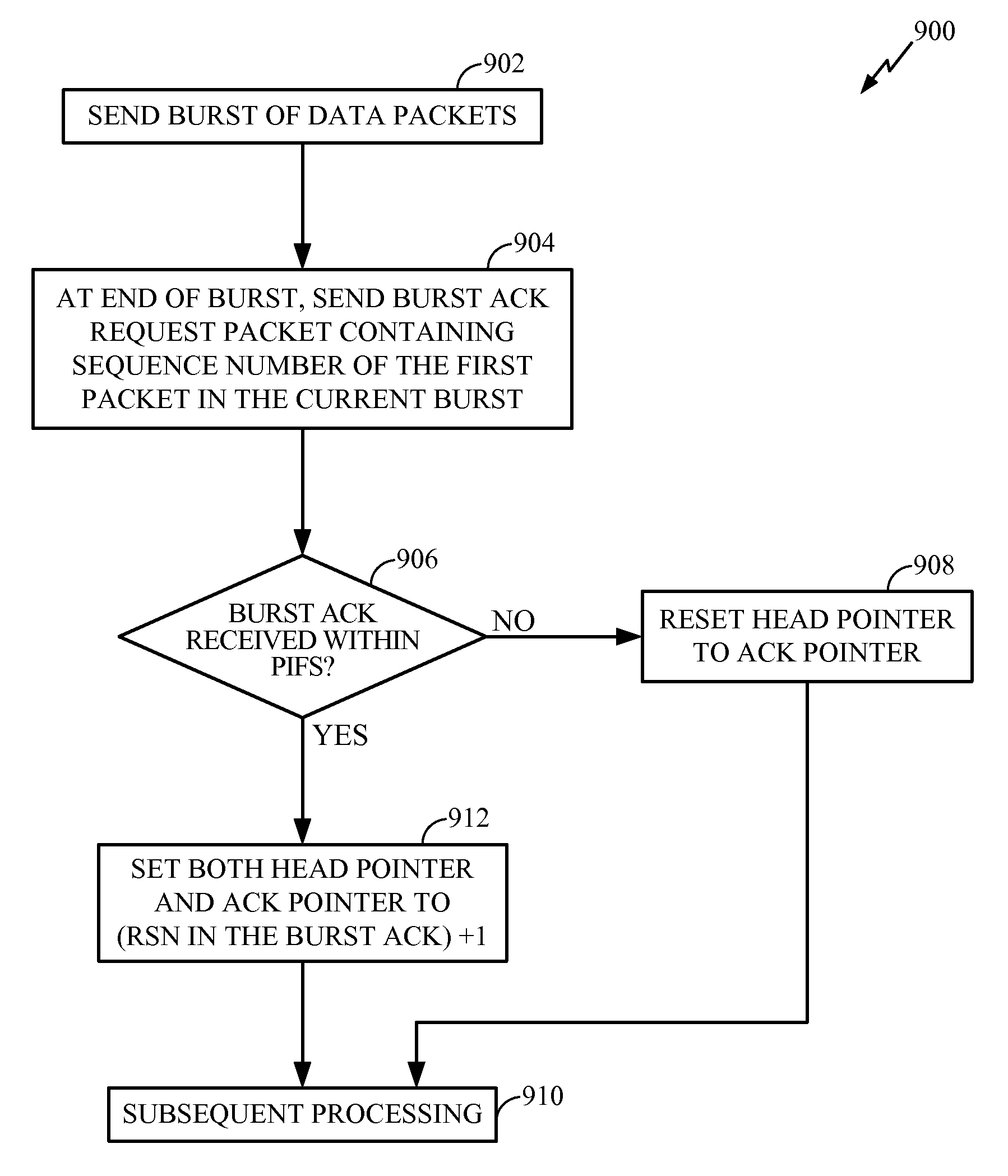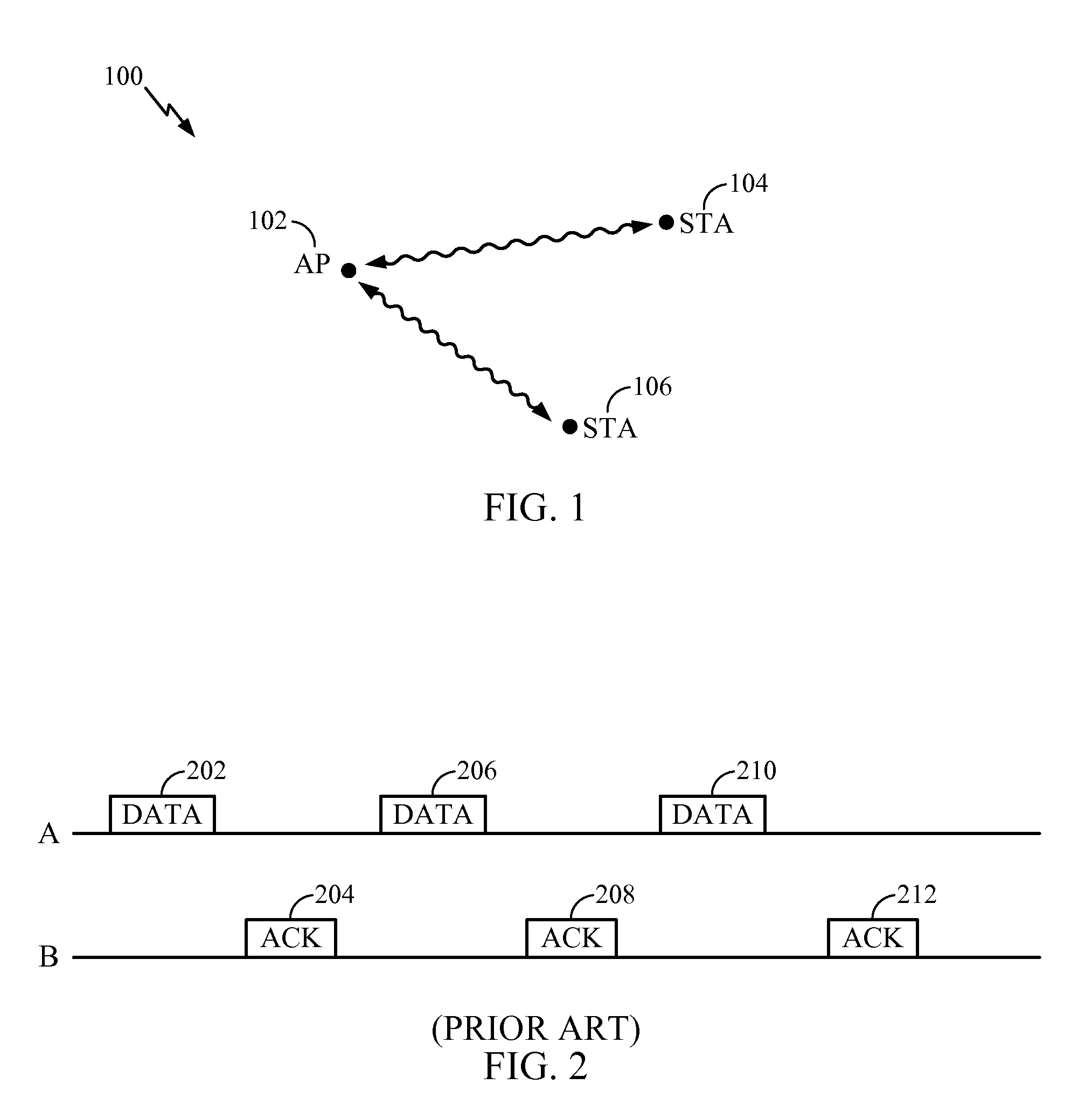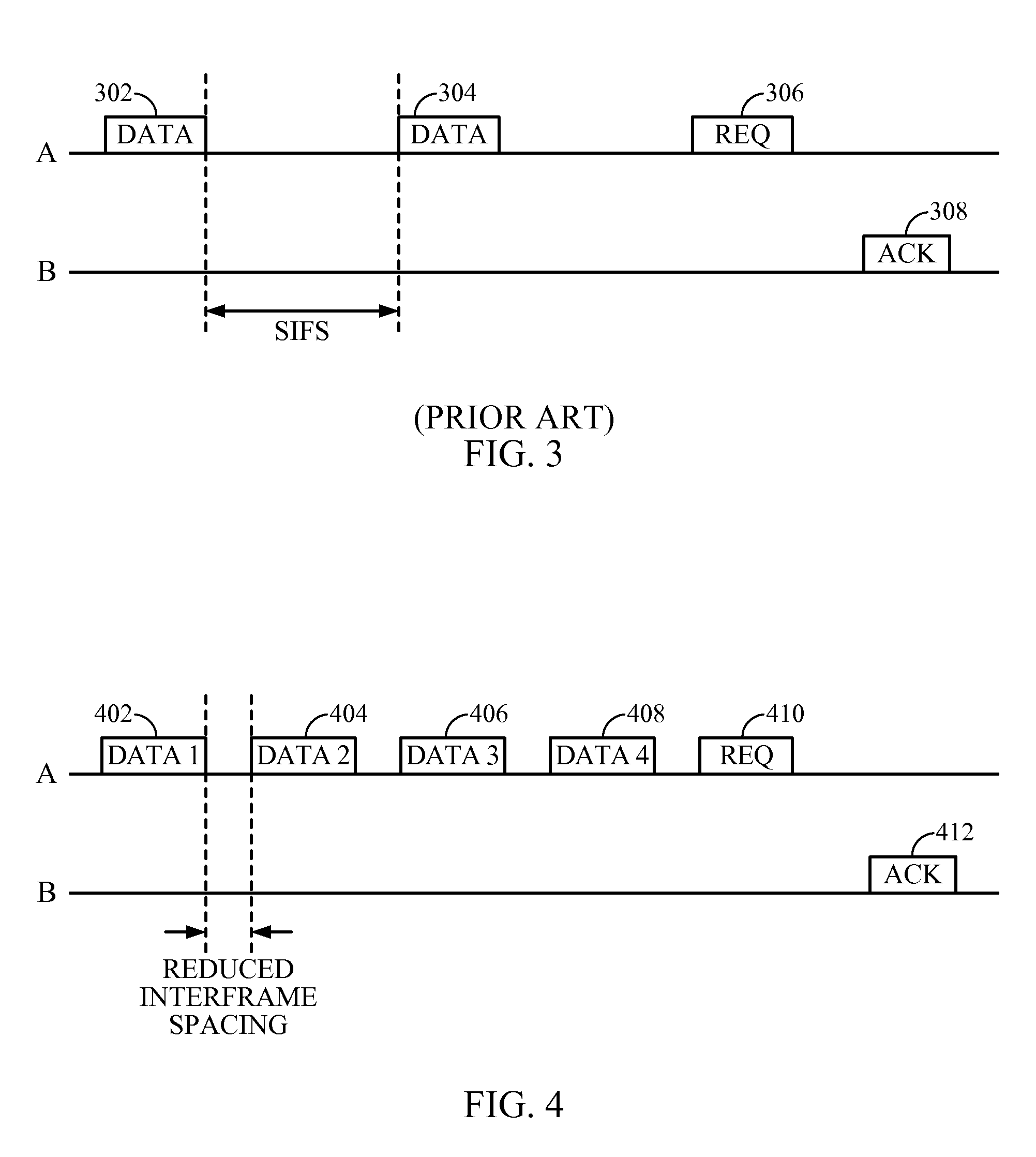Wireless MAC layer throughput improvements
a technology of layer throughput and wireless mac, which is applied in the field of wireless mac layer throughput improvement, can solve the problems of not being able to properly receive the transmission of packets the packet transmitted to the other node on the selected channel is unlikely to be received successfully by the other node, and it is usually impossible for the transmitter to know
- Summary
- Abstract
- Description
- Claims
- Application Information
AI Technical Summary
Benefits of technology
Problems solved by technology
Method used
Image
Examples
Embodiment Construction
[0023]FIG. 4 illustrates an approach for sending a burst of data packets separated by a reduced interframe spacing from a transmitter A, followed by a single acknowledgement packet from a receiver B for providing acknowledgement information with regard to the attempt to receive data packets in the burst, in accordance with one embodiment of the present invention. Transmitter A operates in accordance with a physical layer protocol that is based on a standard physical layer wireless protocol having a defined SIFS. For example, transmitter A may operate according to a physical layer protocol that is based on the standard 802.11a physical layer wireless protocol, which may have a defined SIFS of 16μsec. The physical layer protocol used may be quite similar to the standard physical layer protocol on which it is based. However, the physical layer protocol allows for transmission and receipt of data packets separated by a reduced interframe spacing that is less than the SIFS defined for th...
PUM
 Login to View More
Login to View More Abstract
Description
Claims
Application Information
 Login to View More
Login to View More - R&D
- Intellectual Property
- Life Sciences
- Materials
- Tech Scout
- Unparalleled Data Quality
- Higher Quality Content
- 60% Fewer Hallucinations
Browse by: Latest US Patents, China's latest patents, Technical Efficacy Thesaurus, Application Domain, Technology Topic, Popular Technical Reports.
© 2025 PatSnap. All rights reserved.Legal|Privacy policy|Modern Slavery Act Transparency Statement|Sitemap|About US| Contact US: help@patsnap.com



